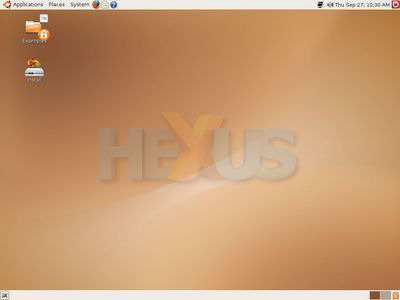How to build a bungalow (start with the chimney)
First, assemble your machine. I'm not going to cover the basics of PC building here, except to give a warning or two: be wary of older Athlon-era VIA motherboard chipsets, which can suffer from terrible performance under the load some expansion cards like TV cards make. Also be wary when selecting your graphics hardware - you'll get the best results with an NVIDIA card of any vintage, as NVIDIA's drivers have the most functionality under Linux. After that, consider Intel's integrated GMA controllers, and finally look at ATI or VIA options. ATI cards may improve in the near future as their recent driver developments reach maturity, but some functionality is still missing in ATI's drivers.
Next, assuming you put it together properly, you need to install an OS on there. We'll be using Ubuntu GNU/Linux 7.04 Desktop Edition, so download it from here. 7.10 is due out any day now, which you could use instead, but all screenshots and instructions assume 7.04. Burn the ISO image onto a blank CD using a tool such as Nero or ISO Recorder - be sure to burn the ISO as a disk image, and not to simply make a new project with a single file called ubuntu-7.04-desktop-i386.iso on it. Insert your CD, and boot your system, making sure you boot from CD and not from hard disk. You should get an install menu. To avoid things going wrong, run the defect check option first. If it passes without complaint, then reboot and pick the top option to load the installer and twiddle your thumbs until the desktop loads. From here, you can start the installer by double-clicking.
The Ubuntu installer is pretty simple - however, you may want to do a little bit of manual work with partition selection. The most commonly used file system on Linux (EXT3) isn't very good at dealing with small numbers of huge files - such as you might get with a number of TV recordings. There's the usual level of debate about filesystems when it comes to MythTV, but most arguments end up with the same conclusion: SGI's file system XFS is the best choice for your recordings. For this reason, it may be prudent to create a partition for all your "stuff", using SGI XFS, which is distinct from your main OS partition. Once the system's finished installing, reboot and log in. If a window pops up offering to enable 3D support, agree to the request.










